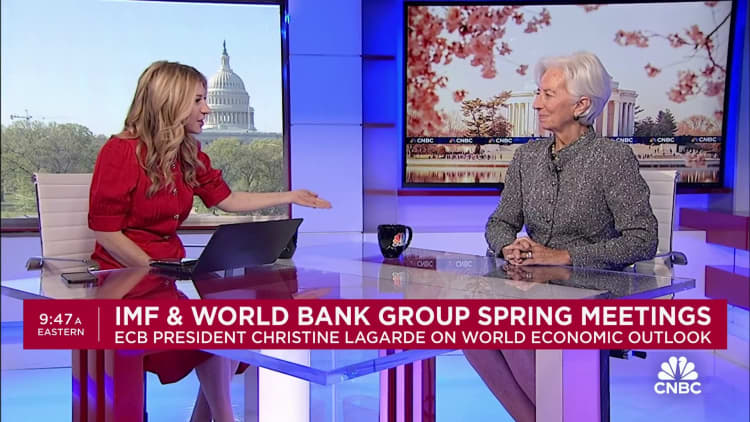
Robert Holzmann, President of the Austrian Central Bank, speaks at an event in Vienna, Austria, Tuesday, September 26, 2023.
Bloomberg | Bloomberg | Getty Images
ECB policymaker Robert Holzman said tensions in the Middle East posed the biggest threat to future ECB interest rate cuts.
“At this stage, I think the biggest threat is geopolitics, because we’ve seen that in the Middle East What happened.
“As you can imagine, only if a ship sinks in the Strait of Hormuz, you might have different oil prices, which of course might require us to rethink our strategy,” he added.
His comments echoed those of European Central Bank policymaker Olli Rehn, who on Tuesday explain The possibility of a rate cut in June depends on whether inflation falls as expected, noting that the biggest risks to monetary policy come from tensions between Iran and Israel and Russia’s war with Ukraine.
“The biggest risks come from geopolitics, including a deterioration in Ukraine and a potential escalation of conflict in the Middle East, with all their consequences,” Bank of Finland Governor Rehn said in a statement. “As summer approaches, as long as inflation continues to fall as expected, we We can begin to reduce the level of restrictions on monetary policy.”
Holzmann is widely considered one of the most conservative members of the ECB’s main decision-making body and warned it was safer not to rush into rate cuts.He recently told Reuters The European Central Bank may adjust interest rates in June, signaling growing consensus for near-term action.
European Central Bank President Christine Lagarde said on Tuesday that barring any major surprises, the central bank is about to cut interest rates.
“We are observing a deflationary process and it is progressing in line with our expectations,” Lagarde told CNBC’s Sarah Eisen.
“We just need to have a little more confidence in this deflationary process, but if it develops as we expect, if we don’t have a major shock to our development, we will be heading towards a point where restrictive monetary policy will have to be eased,” Lagarde said.
Lagarde said it was time for the central bank to cut interest rates “in a relatively short period of time” in the absence of a shock, but did not provide any further details.
Policymakers and economists have pointed to June as the month when rate cuts could begin.

The European Central Bank kept policy unchanged at its fifth consecutive meeting on Thursday, but signaled that cooling inflation meant the institution could soon start adjusting interest rates.
The European Central Bank changed its previous language and said that a 4% deposit rate cut would be “appropriate” if underlying price pressures and the impact of previous interest rate hikes can increase confidence that inflation will fall back to the 2% target. Way.
While investors have sharply pared their bets on a rate cut by the Federal Reserve, speculation persists that the European Central Bank may soon begin cutting interest rates.current trader blame There’s about a 20% chance the Fed will cut interest rates in June after another inflation report showed consumer prices remain sticky.
—CNBC’s Jenni Reid contributed to this report.





